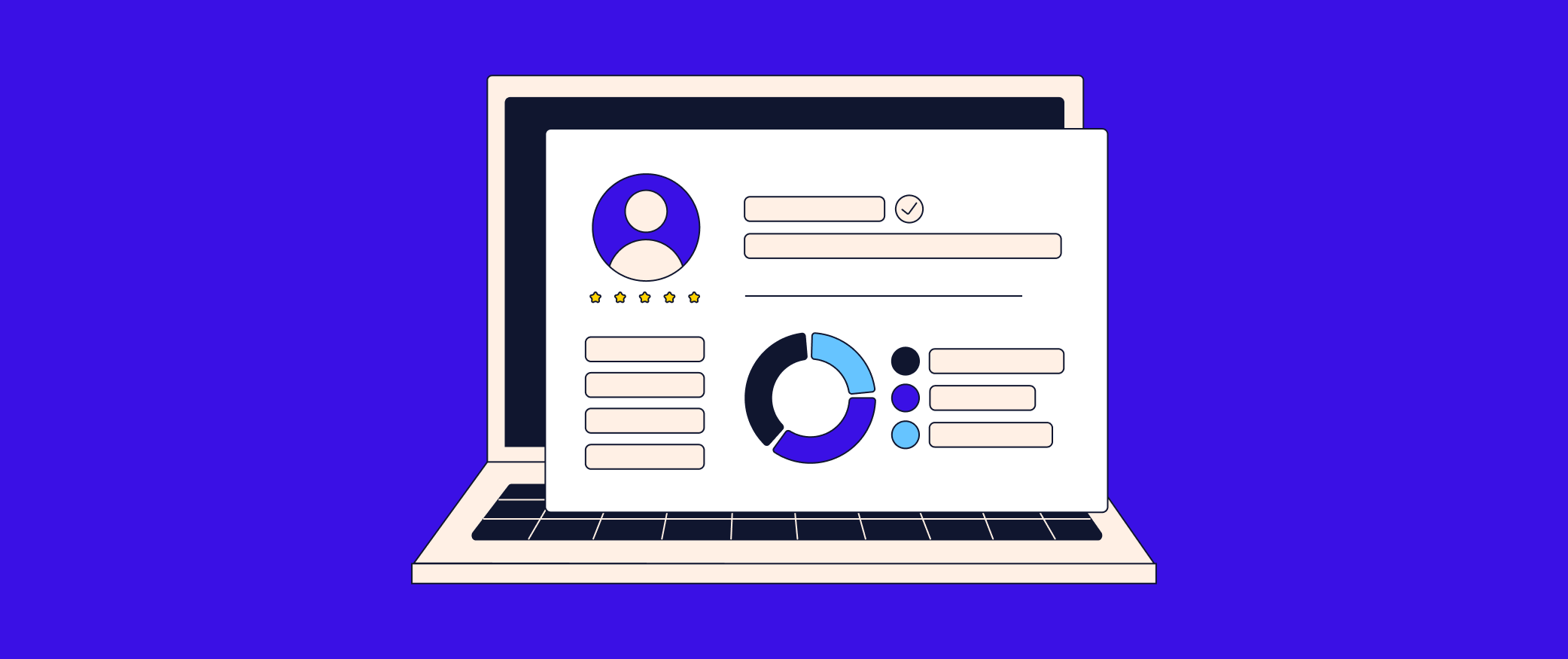
How to Share Your Skill Progress (Even If You’re Starting)
You’ve started learning — maybe you’ve completed a few lessons, built a small project, or explored a new programming language. But when it comes to updating your resume or LinkedIn profile, you hesitate: “Is this enough to share?”
If this sounds familiar, you’re in good company. Programming communities are full of learners asking questions like, “When am I ‘fluent’ enough in a programming language to put it on my resume?” and “Is it bad to put languages/frameworks in resume that I’ve only tried once?”
Many worry they’ll be “called out” for listing a skill they’re still mastering or feel unsure about how to describe their progress professionally. The struggle is real: how do you bridge the gap between “I’ve never touched Python” and “I’m confident enough to list Python on my resume”?
Why sharing your progress accelerates your career
Here’s the thing: sharing your learning journey isn’t just about overcoming impostor syndrome — it’s a career strategy. When you showcase your progress, you’re demonstrating the exact qualities employers want to see.
You stand out in a crowded field
While other candidates list generic “Python, JavaScript, React,” you can show specific capabilities and active growth. Recruiters spend seconds scanning resumes — concrete progress markers grab attention.
You create meaningful conversations with leadership
Your manager sees you’re learning machine learning fundamentals — suddenly you’re included in discussions about the company’s AI strategy. Your skills become a stepping stone to higher-visibility projects and cross-functional initiatives.
You attract stretch assignments and pilot programs
Companies constantly need people to test new tools, lead innovation projects, or fill skill gaps. When leaders know you’re actively building relevant capabilities, you become their first call for interesting challenges.
You solve the experience paradox
Whether it’s “we need React experience” for an internal project or “looking for someone with data analysis skills” for a new initiative, demonstrating active learning and project completion shows you can bridge the gap between current capabilities and role requirements.
This is one of the main reasons why we built the skills tracker. It’s designed to help you see — and show — what you’ve learned, what you’re working on, and what’s next. Whether you’re just starting out or building on existing experience, skills tracking gives you a clear, confidence-boosting way to showcase your growth. Because progress isn’t always about finishing a course — it’s about proving what you can do.
What is the skills tracker?
If you’ve ever finished a course and thought, “Okay… but what can I do now that I couldn’t before?” — you’re not alone. That’s exactly what the skills tracker is here to solve for you. Instead of just showing you a percent complete bar, it gives you a clear breakdown of the skills you’ve gained, the subskills you’ve mastered, and the skill sets you’re building toward.

Zoe Bachman, Head of Learning at Codecademy, explains that focusing on goal-aligned skills, rather than just completing content, is more effective for certain learners. The skills tracker empowers self-motivated learners to prioritize what matters and track progress.
The skills tracker also helps you answer questions like:
- “What do I know well?”
- “Where are my gaps?”
- “What should I learn next?”
You can access the skills tracking feature through your dashboard. Click “View more details” in the “Follow your progress” module or click “Skills tracking” in the sidebar to jump right to your stats.
With this extra layer of personalization, you’ll get dynamic assessments, individualized recommendations, and even unlock custom projects that let you apply what you’ve learned in real-world scenarios. Whether you’re brushing up on JavaScript or diving into data analysis to work towards a promotion, the skills tracker helps you learn with purpose and prove your progress along the way.
How to interpret your progress
The skills tracker introduces a new way to understand your learning: not by what you’ve completed, but by what you’ve gained. Instead of relying on percent-complete bars, you’ll see a breakdown of the skills, subskills, and skill sets you’ve built — and how they connect to real-world outcomes.
Each subskill you complete contributes to a larger skill, and each skill ladders up to a broader skill set. For example, mastering loops and conditionals (subskills) contributes to your proficiency in Python (a skill), which might be part of a Data Analysis skill set. This hierarchy helps you see how small wins add up to meaningful capabilities — and where you still have gaps to fill.
Understanding your skill levels:
- Subskills: Specific techniques or concepts (like “Create and manipulate lists in Python” or “Facilitate component interaction using props in React.”)
- Skills: Broader capabilities built from multiple subskills (like “Implement fundamental programming concepts in Python” or “Build dynamic user interfaces in React.”)
- Skill Sets: Complete professional toolkits built from multiple skills (like “Build full-stack applications for web development” or “Build recommender systems with Python.”)
The skills tracker actively guides your learning. If you’re unsure what to focus on next, the skill tracker will make it clear where your gaps are and make it easier to choose what’s next based on your current progress. And once you’ve built enough skills, you’ll unlock custom projects that let you apply what you’ve learned — a key request from learners who want to prove their skills through hands-on work and share tangible proof with their community.
Tips for showcasing your skills professionally
The skills tracking feature makes it easier to showcase your abilities at any stage of your learning journey. Instead of wondering if you’re “good enough” to list a programming language on your resume, you now have concrete data to back up your claims.
On LinkedIn
- Use “Add to Profile” → Skills or Projects
- Include specific subskills or project titles in the “Education” section of your LinkedIn profile
- Example: “Completed 80% of Codecademy’s Python subskills — currently building a portfolio project”
- Share a post about what you’re learning with a screenshot of the skill. To make it stand out, add a quick note about why you’re learning this skill, what you’ve gotten out of it so far, or how you plan to use it next. (Psst, don’t forget to tag Codecademy so we can amplify your post!)
- Example: “Just mastered conditional statements and loops in Python with @Codecademy! And already finding ways to apply them to automate small tasks at work. Next up: working with APIs to build my first data visualization project.”
On your resume
Transform your skills into actionable statements that show what you can do:
What to avoid:
- “Learned Python”
- “Studied data analysis”
- “Familiar with machine learning”
What works better:
- “Built automated data pipelines using Python to process customer feedback data”
- “Developed machine learning models to predict user engagement, achieving 85% accuracy”
- “Created interactive dashboards in Tableau to visualize sales trends for executive reporting”
Use your skill tracker data to organize your technical skills section across different domains, for example:
Programming & Development:
- Python (75% of core subskills completed, including data structures, loops, and file handling)
- JavaScript (Proficient in DOM manipulation, event handling, and React fundamentals)
Data Science & Analytics:
- SQL: Advanced querying, joins, and database optimization
- Machine learning: Completed supervised learning fundamentals, working on neural networks
AI & Emerging Technologies:
- Prompt engineering: Developed workflows for content creation and data analysis
- Generative AI tools: Experience with ChatGPT API integration and Claude for automation
Currently Learning:
- React: 40% complete, focusing on component lifecycle and state management
- Deep learning: Building first neural network projects with TensorFlow
In portfolios or personal sites
- Embed screenshots of your skills tracker progress
- Link to completed custom projects with detailed descriptions like: “Applied Python data analysis skills to explore housing market trends”
- Create a dedicated “Skills Journey” section showing your learning path and next goals
Common questions learners have
When should I share my progress? After completing a few related subskills or finishing your first project. You don’t need to wait until you’re an “expert.”
What if I’m not 100% done with a course? Share what you’ve achieved so far — progress is powerful. A 60% completion rate with solid subskill mastery is more impressive than a 100% completion rate with no retained knowledge.
What if I forget syntax or need to Google things? Totally normal — even senior developers Google syntax regularly. Focus on what you can build and explain conceptually.
Should I list skills I’m not currently using? Yes, with context. Try: “Python (learned 2023, refreshed core concepts in 2024)” or “Familiar with PHP from previous projects, currently focusing on JavaScript.”
How do I prove I know a skill without years of experience? Use your Skills Tracker breakdown, showcase projects you’ve built, and be specific about what you can do. “Can build interactive web applications using JavaScript, including API integration and responsive design” is much stronger than simply listing “JavaScript.”
Start owning your progress today
You don’t need to finish a course to prove your skills. Every subskill you master, every concept you understand, and every project you build is worth celebrating and sharing. The skills tracker gives you the confidence and clarity to showcase your growth at any stage of your journey.
Ready to see what you’ve learned? Access your skills tracker and start sharing your progress with the world. Remember: Progress is powerful, even if you’re just getting started.
Source link



